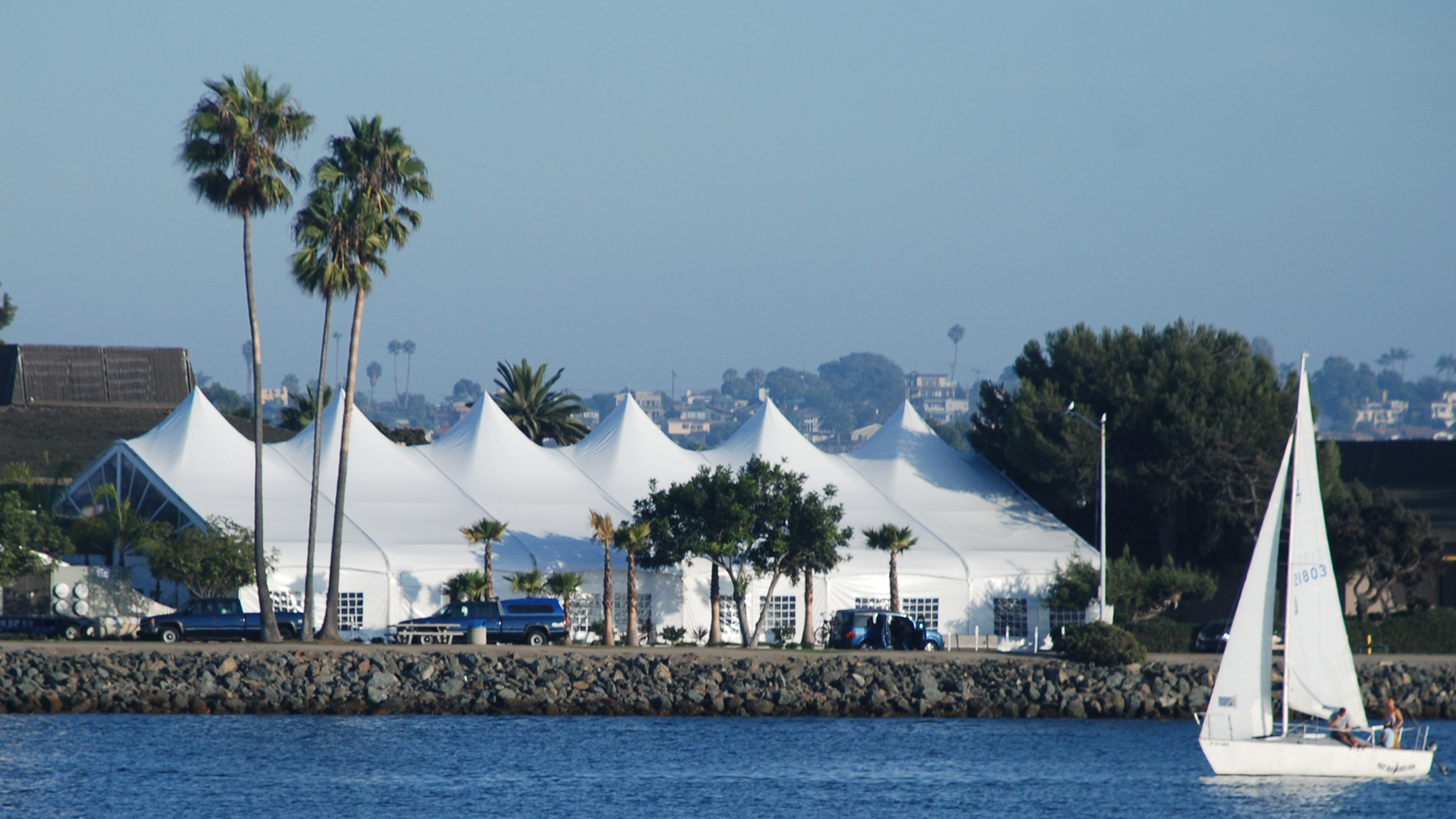Temporary Structure Tent Types
Many tent manufacturing companies provide a variety of tent styles to suit specific requirements for outdoor events. Understanding the terminology used to describe the different tent types and whether one is ideal for an event is essential.
Pole Tents

Pole tents are supported by a center pole, side poles, straps tied to each side pole, and stakes placed into the ground around the tent’s perimeter. These tents have several center poles as well as poles around the perimeter. In comparison to frame tents, pole tents require more space because their stakes must be set farther from the tent’s edge. Pole tents utilize a lightweight vinyl covering designed to provide shade and protection from light rain.
The canopies of pole tents are lightweight and can be used for a variety of applications, including parties and outdoor events. They are commonly used for small backyard gatherings, reunions, weddings, fairs, and trade shows.
Pros of Pole Tents:
- Relatively low cost
- Quick installation and takedown
Cons of Pole Tents:
- Center poles can obstruct interior space
- Inability to handle strong winds or heavy rain
Frame Tents

The design of frame tents relies on a tent frame for structural support instead of ropes and stakes to physically anchor the tent. The frame creates a larger chassis on which the canopy is fastened. Also, they do not have center poles, utilizing only perimeter poles. This tent works well on solid ground or at events where central poles are unsuitable. With frame tents, unique event setups are possible.
A frame tent is a versatile tent option for almost any type of event or custom installation. However, the increase in installation labor makes this tent more expensive than a pole tent. They are commonly used for festivals, exhibitions, logistics, warehouses, and more.
Pros of Frame Tents:
- Minimal anchoring
- Greater versatility
- No center poles limiting interior space
- Rated for moderate wind and weather
Cons of Frame Tents:
- More labor to setup
- Heavier, more complicated components
- Larger overall cost
Clear Span Structure Tents

The most durable type of tent is a clear span structure tent, which has no central poles, taller perimeter legs that are spread further apart, and a higher ceiling than a pole or frame tent. Because they depend on an exterior frame to support the weight of the tent, clear span tents are constructed similarly to frame tents. It is common for beams and rafters to support more weight than any other type of tent. This allows for additional options including the ability to hang larger decorations, lighting, video equipment, fans, and better heating or air-conditioning.
If the installation requires high performance, a clear span structure tent is a great choice. Their high wind and storm ratings are ideal for long-term deployments, such as on construction sites and renovations. They also function well for occasions like car exhibitions or concerts because they have broader openings and higher ceilings.
Pros of Clear Span Tents:
- Commercial and industrial performance
- Provides more space
- Wide variety of indoor and outdoor accessories
- Stands up better to heavier winds, snow loads, and inclement weather compared to other types of tents
Cons of Clear Span Tents:
- Increased installation and removal time
- More expensive cost than pole or frame tents


